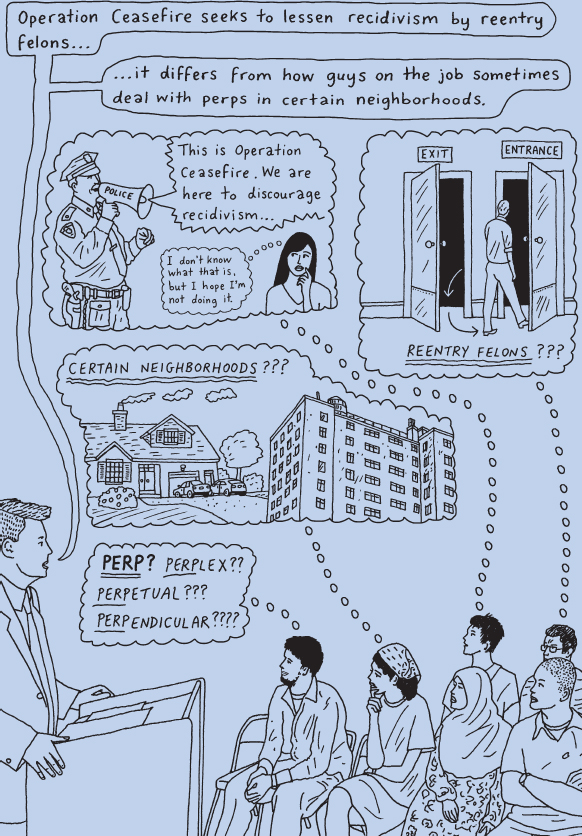LANGUAGE AND STYLE
Printed Page 337
12
LANGUAGE AND STYLE

Look for the  throughout the chapter for online video activities at bedfordstmartins.com/speakup.
throughout the chapter for online video activities at bedfordstmartins.com/speakup.
 Choose your words carefully.
Choose your words carefully.
Marvin was eager to present his speech about a law-enforcement intervention program called Operation Ceasefire to his classmates.1 He explained that the program—led by a mixture of police, clergy, teachers, neighbors, and community leaders—promotes interventions with repeat offenders in a community. In discussing the program, Marvin used technical terms, such as “reentry felons” (paroled ex-felons who return from prison to their communities) and “recidivism” (committing crime again). He also used police slang, such as “deal with perps” and “guys on the job.” At one point, he contrasted Operation Ceasefire to how police traditionally handle “certain neighborhoods” and provide “protection” from violent crime. When Marvin sat down after concluding his speech, he felt confident that he had both conveyed his credibility and met his objective: informing the audience about his topic.
Marvin’s classmates, however, had mixed reactions to his talk. Many found him credible because of his wide vocabulary of police slang, as well as his use of legal jargon, while others found his language impenetrable. Several audience members resented his use of “guys on the job” for “police officers,” and some found the phrase “certain neighborhoods” insensitive because it seemed to be a veiled reference to socioeconomics or race. Audience members reacted differently to the word “protection,” with some reminded of the heroic efforts and sacrifice of police officers featured in the news, and others thinking of recent reports of excessive police violence and corruption.
Clearly, Marvin failed to get his message across to many in his audience—in large part because of his word choice. Word choice, or diction, requires consideration of audience, occasion, and nature of one’s message when choosing language for a speech. If Marvin had used the same language when talking to an audience of police officers, he might well have had more success, but his classmates consisted of diverse students with very different perspectives on law enforcement than those of police officers—and who used very different language. Marvin failed because he didn’t adapt his word choice to his listeners’ expectations. When it comes to giving speeches, word choice can matter far more than you might think.
Similarly, word choice factored heavily in Martin Luther King Jr.’s “I Have a Dream” speech, which we discuss in chapter 2. When King presented this address on August 28, 1963, at the March on Washington, he didn’t give it an official title. Only later did people start calling it the “I Have a Dream” speech. Why has this phrase endured in people’s memories? It was an exceptionally powerful expression that encapsulated King’s vision of a time and place free from prejudice and discrimination. More than forty-five years after his death, people still experience profound emotion when they recall this expression. If King had calmly used the words “I hope” instead of “I have a dream,” he would have had much less impact on his listeners.

An average speech may contain hundreds or even thousands of words, and every one of them matters. Selected carefully, your words can help you connect with your audience and get your message across clearly. Used thoughtlessly, they may confuse, offend, bore, or annoy your listeners, preventing them from absorbing your message. In this chapter, we examine the importance of choosing the right words for your speeches, and the difference between oral and written language. Then we explain how to use language to present your message clearly, express your ideas effectively, and demonstrate respect for your audience.